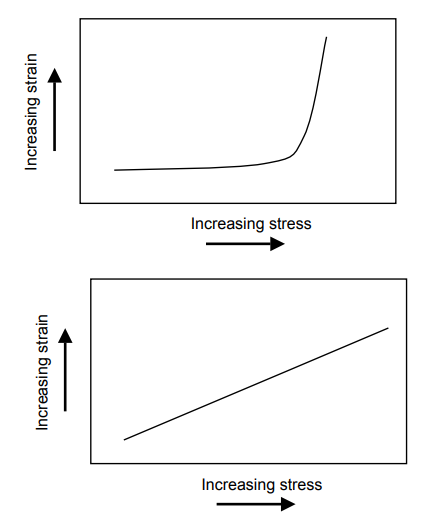Mathematics
Science
Grade Levels: 7th Grade, 8th Grade, 9th Grade, 10th Grade,
Topics: Algebra (Interpreting x-y graphs)Forces (Stress and Strain)Physical Science
Concepts:
• Stress
• Strain
• Can relate aspects of a graphical model to the real world situation which is being modeled
Download the Teacher Guide PDFLesson:
Procedure: Prepare for presentation the Futures Channel movie, “Designing Backpacks.” Tell students that as they watch the movie, you want them to think about this question (which should be posted):
What qualities or characteristics would you look for in material that is used to make a backpack?
At the end of the movie, ask students to work in teams of two or three to list answers to this question. Generate a list of all answers, and be sure that it includes the characteristics of “strength” and “weight.” Through further discussion, guide the class to the agreement that the ideal backpack material would be both light and strong.
Ask students now to think about how they would measure the strength of a piece of material being considered for use in making backpacks. Discuss some answers, then distribute the handout to the teams. Ask the teams to study it and talk it over for a few minutes. Then, as a class discussion, ask students to summarize the problem, so that it is clear to everyone what they are being asked to do.
Circulate as teams work, and ask questions to ensure that they understand how the graphs each show a relationship between the variables “stress” and “strain.” Student descriptions should reflect their understanding that the top graph shows a material which stretches very little at first as more stress is applied, then suddenly tears, so that a little more stress causes a lot more stretching. The material in the bottom graph, on the other hand, stretches continuously as more force is applied. Since a backback strap should NOT stretch when the backpack is loaded, the material shown in the top graph would be preferred for backpack use.
Strap Stress
When force is applied to a material, it will usually cause the material to change shape, even if just a little bit. In such a situation, the force that is applied is called “stress,” and the change of shape of the material is called “strain.”
For example, when you sit on a wooden chair, the weight of your body exerts stress on the chair. The wooden frame of the chair will bend, very slightly, and with the right instruments, you could measure exactly how much it bends–the strain.
The two graphs below represent the relationship between stress and strain for two different types of material, which are being considered for use as backpack straps. The graphs were created by applying a stretching-type stress to the material, and measuring how far it stretched (the strain).
1) Describe what each graph shows, in as much detail as you can.
2) Which material would you choose for the backpack strap, and why?

